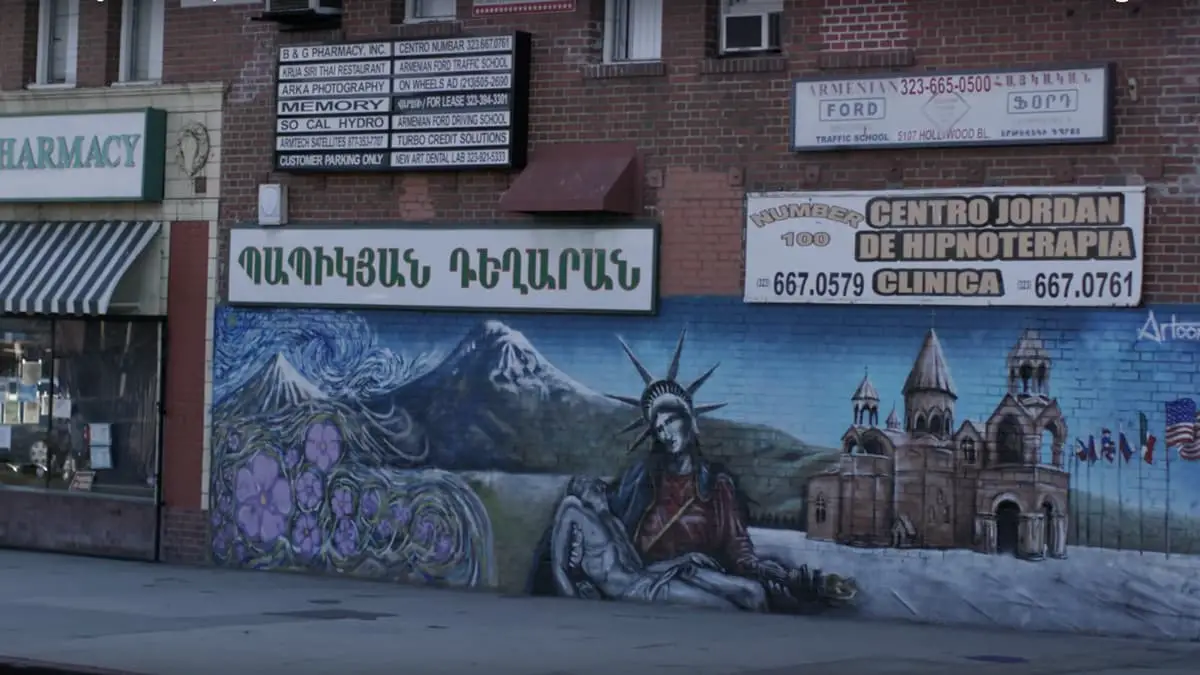Little Armenia
More Armenians now live outside Armenia, in cities around the world, than in it. This is the result of thousands of years of hardship: wars, revolutions, and genocide that have forced Armenians to disperse again and again as refugees. Armenian food culture reflects this dispersal, pulling from other traditions to produce a varied cuisine that changes from one community to another. But in L.A., which has the second-largest Armenian population in the world, many different generations of Armenians meet, bringing together the disparate cooking styles that millennia of unrest have brought about.
Lory Tatoulian: There are Armenians from all over the world, Iranian Armenians, Lebanese Armenians and Armenians from Armenia. We actually have one of the biggest diasporas. One of the cultural elements that bind all Armenians together is our love for food.
When you go to an Armenian home the entire dining room table will be filled with string cheese and cracker bread, pickles, and boreg and hummus and tabbouleh and they’re like screaming at the children to get out of the kitchen and meat coming from the oven. I mean it just like this Opera of food. It’s like this big production seriously.
Armenians have been living in California for a very long time. They basically helped create the agricultural community in the San Joaquin Valley. Los Angeles has the biggest population of Armenians outside of Armenia.
Jack Torosian: All right, guys, come on in. This is the kitchen where everything happens. She’s making the traditional Armenian Pounchig’s cream, it takes hard steering. Papillon International Bakery is a traditional Armenian bakery that’s been turned into a fusion with everything else that’s around us, for us one of the more basic Armenian copper food has been parash ponchick is originally from Poland, but Armenians took it and made it into our own the ponchicks now, we have 18 different flavors, which include dulce de leche with the Spanish twist vegan flavors. We don’t make anything until it’s ordered. We give them the freshest the best tasting parash ponchick they could ever had in their lives.
Rose Tcholakian: Every time I like something I remember either my mother or my mother-in-law, I’ve learned from them.
Mike Tcholakian: In 1975 the Civil War started in Beirut Lebanon. We arrived in LA with nothing in our pockets. My father reassured my mother that with her home-style homie Armenian recipes they would succeed, and surely he was right.
Rose Tcholakian: Very thin, a very thin dough should be very thin to be crispy.
Mike Tcholakian: We have a huge variety of appetizers Mante are mini meat pies are known as grandmother’s cooking because it is very labor-intensive. Our Cuisine is a feasting type of Cuisine which compliments very well with live entertainment, dancing.
Lory Tatoulian: So where we are now with the Armenian Community is that it’s this Kaleidoscope of all these different Armenians living together here in LA.
Anto Ohannessian: For me, my customers are not just customers. I tell them to talk freely with me because I talk very freely with them. This establishment is the first Armenian Restaurant in Little Armenia. When it comes to food, we’re all very similar. We all eat shish kebabs.
Basically Armenians from the genocide when they scattered all over the world, my family went to Lebanon. Armenians from Lebanon we ate Falafel Shawarmas too.
Jack Torosian: When we initially started maybe 95% of our customers were Armenian at this point we have about 50% of other cultures walking into our stores and we’re very proud of that.
Anto Ohannessian: We’re getting American people Latin people, Asian people. They love our food just like we love their food. We want everybody to like this place.
Lory Tatoulian: Armenians we use food for every occasion to celebrate for instance Christmas, mourn to express ourselves. We have lived all over the world and we’ve been neighbors with so many different cultures were bringing all the Cuisines of experience and we’re creating something new here in Los Angeles.


